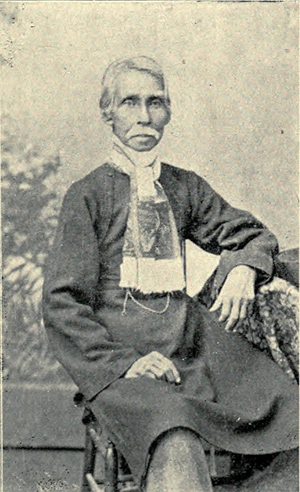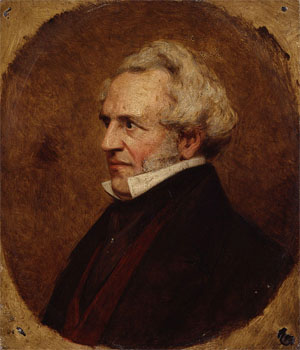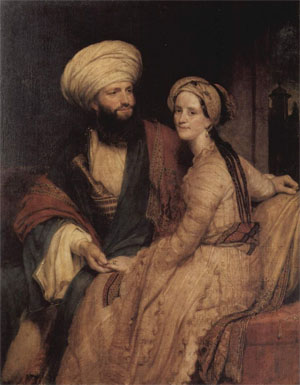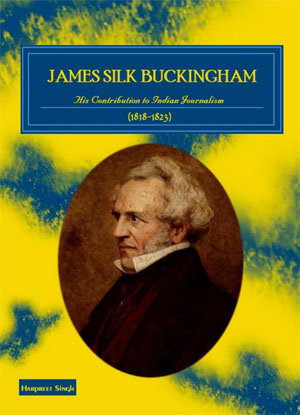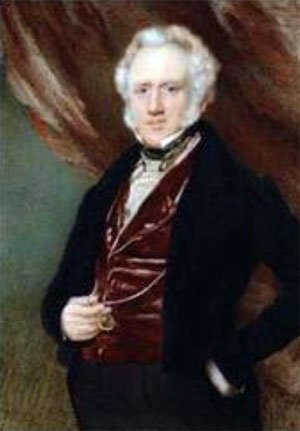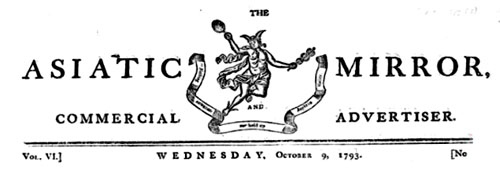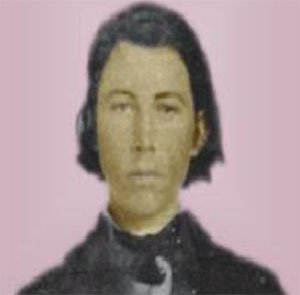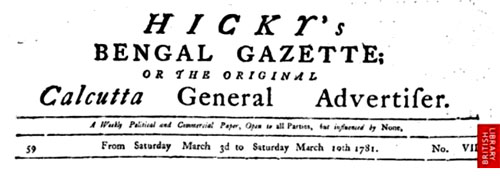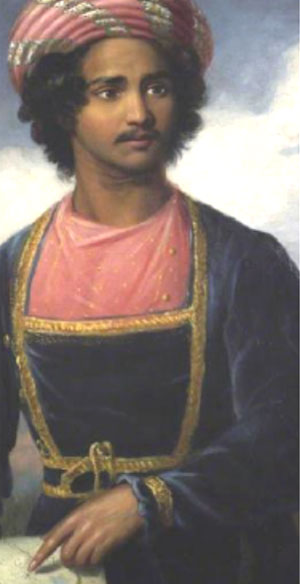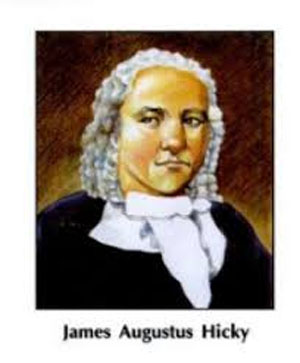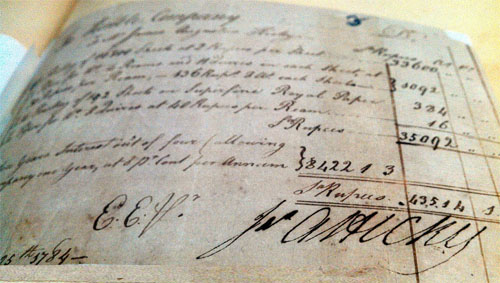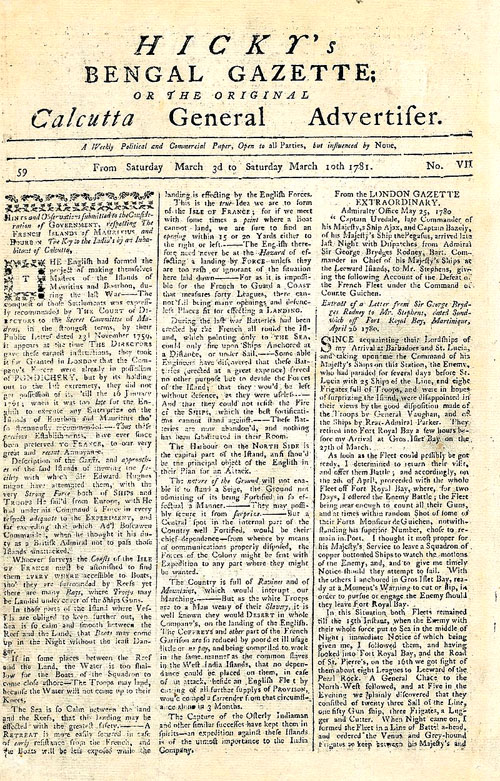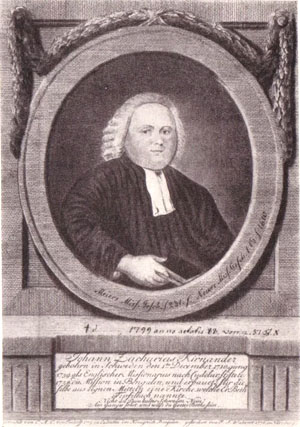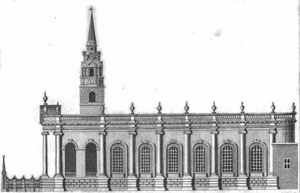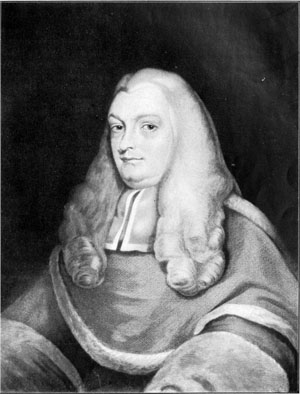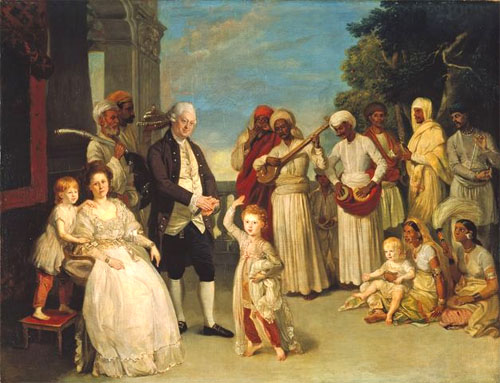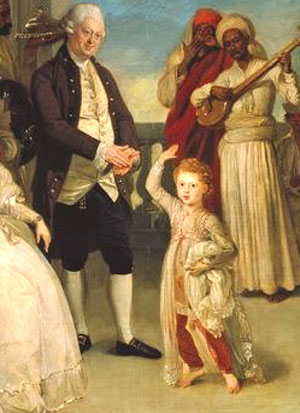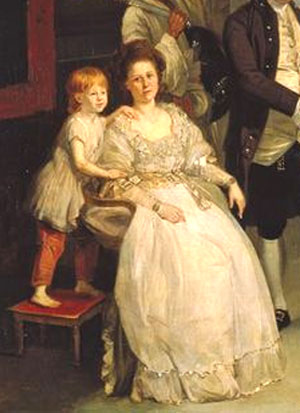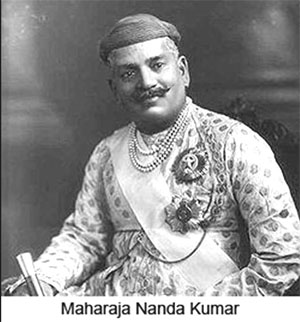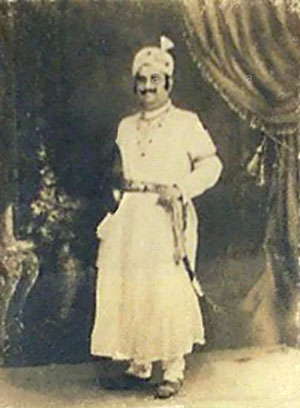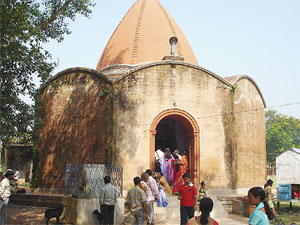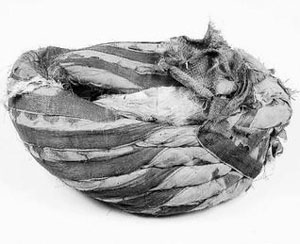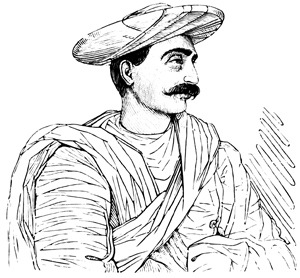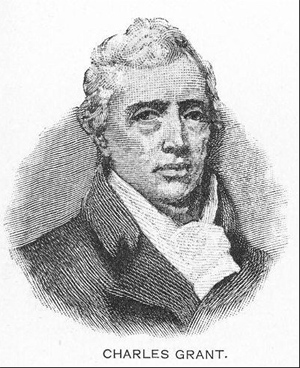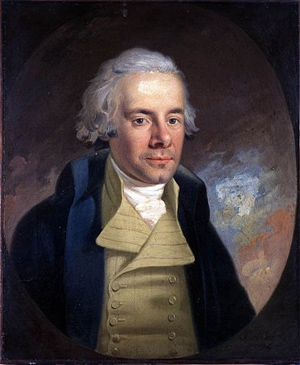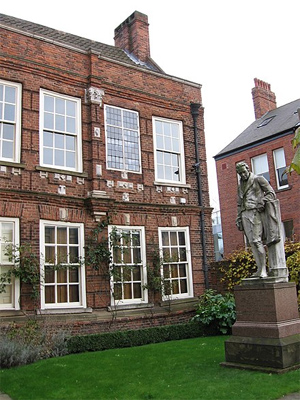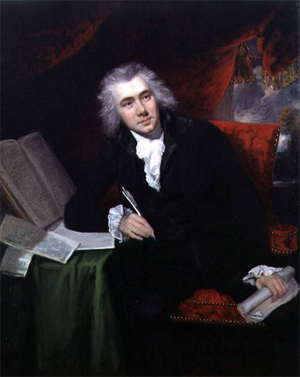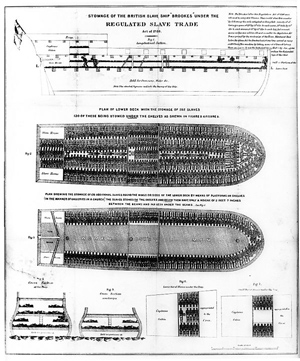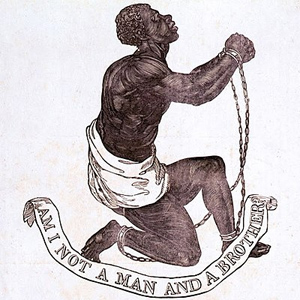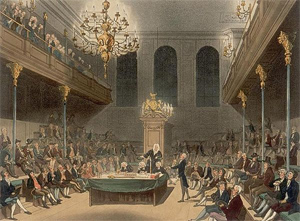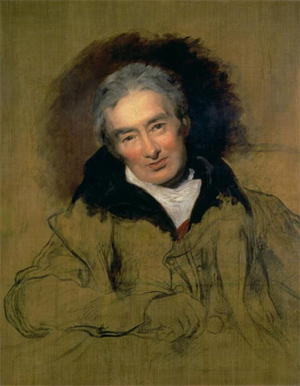by Brian A. Hatcher
History of Religions Vol. 46, No. 1, pp. 50-80 (31 pages)
Published by: The University of Chicago Press
August 2006
[...]
RAMMOHAN THE FOUNDER
[...]
Rammohan promoted a version of monotheism he hoped would restore the rational and moral basis of Hinduism; he translated the ancient Upanishads into Bengali and English; he publicly debated the truths of Hinduism and Christianity with a variety of interlocutors, Hindu and Christian; he supported the spread of English education in India; and he campaigned to suppress the practice of widow immolation, known to the British as suttee. But in the present context, Rammohan's most relevant accomplishment was the founding of a society in 1828, the Brahmo Samaj, to foster his vision of Hindu monotheism.
Though born a Brahmin, Rammohan's spiritual development took him down a number of intellectual avenues. Early in life he is said to have studied in both Patna and Benares, centers for Arabic and Sanskrit learning, respectively. His first published essay was a lengthy rationalistic appeal for monotheism, written in Persian, Tuhfat al-Muwahhidin (A present to the believers in one god).33 Much of his most mature work would focus on mastering and translating Sanskrit texts on Vedanta from the Upanishads to the Brahma Sutras. In addition to his immersion in Indo-Persian and Vedantic learning, Rammohan also studied Tantra and had worked in close contact with the English collector, John Digby, for a dozen years in the outlying districts of Bengal. Thus, by the time he settled in Calcutta in 1815, he had amassed the kind of experience that would earn him acclaim as a polymath scholar and polemicist.
A further reason for poor relations was a series of disputes along the boundary between Bhutanese territory in the Duars and the princely state of Cooch Behar which had been under British protection since 1774.16 Hastings had tended to favour Bhutan in these disputes, perhaps taking the view that minor territorial concessions were worthwhile if they served the Company's wider diplomatic and commercial interests. However, Hastings' successors and their local representatives tended to take a more legalistic view, and frequently ruled against Bhutan.
British and Indian officials in Rangpur
On the British side, the frontline management of these boundary disputes fell to the Commissioners in Cooch Behar and the Collectors in Rangpur. The key protagonists in the early decades of the 19th century include: James Morgan, who was Collector of Rangpur from 1807 to 1809; John Digby, who succeeded him from 1809 until 1814; and David Scott who was successively Collector in Rangpur from 1814 to 1816, and then Commissioner in Cooch Behar.17
Krishnakanta Basu and Rammohan Ray
All three men were of course supported by an extensive Indian staff. Among these were Krishnakanta Basu who joined government service as a junior official in the Rangpur Faujdari 'Adalat (criminal court) in 1807,18 and Rammohan Roy who first came with Digby to Rangpur in 1809. Rammohan had been born into a wealthy Bengali family in 1774, and had entered Digby's service in 1805, initially as a private munshi (secretary) and then as temporary sar-ristadar (head clerk) of the Ramgarh Faujdari 'Adalat in northern Bihar.19 He moved with Digby successively to Jessore (Bengal), Bhagalpur (Bihar) and finally to Rangpur.
Digby evidently held Rammohan in high regard. In November 1809 he wrote to the Board of Revenue describing Rammohan as a "man of very respectable family and excellent education" and seeking the Board's approval of his appointment as his diwan.20 However, the Board rejected the appointment, arguing that Rammohan was insufficiently qualified. When Digby sought to protest, citing Rammohan's excellent qualifications and references, the Board confirmed its original decision and reproved him for the style in which he had addressed them.21 Despite this setback, Rammohan remained in Rangpur. Two Bengali-language letters from 1812 and 1814 refer to him as diwan,22 and it therefore appears either that he was reappointed to the post, or that he continued to hold the title unofficially.
The Maraghat boundary dispute
The most important of the Bhutan/Cooch Behar boundary disputes in the period under review concerned the Maraghat district, some 25 miles from Jalpaiguri. Maraghat was awarded to Bhutan in the 1774 treaty with the Company, and this was confirmed by a Council at Dinajpur in 1777. However the Raja of Cooch Behar claimed the southern part of the district, which was known as Gird Maraghat.23 In 1807 Morgan conducted an on-the-spot enquiry and decided in favour of Cooch Behar. In 1809 Digby confirmed Morgan's ruling awarding Gird Maraghal to Cooch Behar, and the Maharaja took possession of the territory two years later.
The Bhutanese never accepted these decisions. For example, in 1811 a letter to the Company from 'Penlow Sahib, a chief of Bhutan', complained that an officer of the Maharaja of Cooch Behar had been causing trouble over the boundary for the previous three years, and expressed fears that war might ensue.24 Similarly in 1812 a letter from the Deb Raja again referred to Maraghat, appealed for assistance in resolving the dispute, and said that 'Diwan Rammohan' knew all the facts of the case.25 In May 1814 the Maharaja of Cooch Behar appealed to Norman McLeod, the Commissioner of Cooch Behar, asking him to arrange for the deployment of 50 sepoys to protect the Maraghat frontier from Bhutanese infringements.26
The Maraghat dispute was therefore far from being resolved in late 1814 when it was overtaken by the outbreak of the Company's war with Nepal. At that point Maraghat became one factor in a much wider set of strategic calculations on the part of the British, and it was these that in due course led to Krishnakanta's and Rammohan's mission to Bhutan...
Selecting the messengers
Scott now had the task of selecting a suitable representative, and eventually decided on Krishnakanta Basu. Krishnakanta himself described the background in an application for a pension (translated from Bengali by Scott) which he wrote in 1821. Like Bogle's Tibetan merchants, he observed that the contrasting climates of the plains of India and the Himalaya presented a major obstacle:.... no person at Rungpore could be found to undertake the duty, the Climate of the hilly Country being from the snow and extreme cold exceedingly hostile to the Constitutions of the natives of Bengal .....48
Religious ritual concerns were another major factor. Bengali Hindus were:... further deterred from proceeding into those Countries by the difficulty and occasional impossibility they experience in selling those articles of provision to which they are accustomed, as well as by the manners and impure habits of the people which are so repugnant to the customs of the Hindoos that few persons of the latter religion will venture into Bhootan from fear of losing their Caste.49
Krishnakanta nevertheless decided to take on the task, partly for material reasons:Notwithstanding the above considerations your petitioner being grateful for the subsistence afforded by the Government and hopeful for future advancement and eventual benefit, bound himself with the girdle of courage and regardless of the consequences, not to say despairing of returning alive, agreed to undertake the journey.50
It seems that he received an immediate benefit in that his salary was raised from Rs. 14 per month as a 'Mohurrer' (a writer in local languages) to Rs. 70 when he was in Bhutan. However, Scott confirmed that Krishnakanta had not been exaggerating when he referred to the difficulty of finding someone to undertake the journey:For the accuracy of such parts of his petition which relate to the unwillingness displayed by the natives at Rungpore to undertake the journey to Lhassa and the danger attending to it, I can safely vouch, as no capable person but himself could be found to undertake the business and the risk from the climate at the particular season was such that thinking it not improbable that the petitioner who was ill at the time of his departure might die on the way, I sent another man to go along with him as far as Bhootan in case of the occurrence of such an accident.51
From the Deb Raja's subsequent correspondence, it is clear that Rammohan Roy was this 'other man' and -- particularly since he would have been senior to Krishnakanta -- it is odd that Scott does not mention him by name. Very speculatively, one wonders whether this was because he was no longer in formal government service by the time he travelled to the Deb Raja's court, and therefore had no official status.52
Krishnakanta's stay in Bhutan
Krishnakanta gives a vivid description of the journey in his 'Account of Bootan'. Before reaching the hills, he had to pass through the Bhutanese Duars, and he describes a series of perils in the jungles:The jungle is of such height that an elephant or rhinoceros cannot be seen in it when standing up, and it is so full of leeches that a person cannot move a hundred yards without having his body, wherever it has been scratched by the grass, covered with these animals, so that a single man cannot get rid of them without assistance. In this jungle, when the sun shines, the heat is intolerable, and when the sun ceases to shine a person cannot remain in it without a fire on account of innumerable musquitoes [sic] and other insects with which it is filled.53
His account of the terrain once he reaches the hill is more matter-of-fact, noting the various habitations that he encountered en route, the degree to which they were cultivated, and the extent to which the roads would be passable for horses or elephants.
At all events, the two men duly arrived in 'Wandipoor' (Wangdi Phodrang), and presented their credentials. The Deb Raja responded by sending a letter to Scott in Rangpur in which he acknowledged a present of five pieces of broadcloth, five coats and a telescope.54 He said that Scott's letter to the two representatives of China -- presumably the two Ambans -- had been forwarded to Lhasa: The two emissaries had explained that one of them was to stay in Bhutan while the other -- Rammohan Ray -- was to return to Rangpur.
The rest of the letter is a clear indication of the Deb Raja's priorities inasmuch as it mainly concerns his grievance over the continuing boundary disputes with Cooch Behar and Baikunthapur. He only refers to the Nepal war -- which from Scott's point of view was by far the most important matter at a hand -- in a postscript. There he notes the Gorkhas had wronged the Company, according to what he had learnt from Rammohan and Krishnakanta, and he will therefore reject any Gorkha approaches in connection with the war. He then returns to the boundary disputes, requesting that Scott either come to the frontier for a local enquiry, or send Rammohan back with a clear decision in the matter.
In the event, rather than returning to Bhutan, Rammohan moved to Calcutta where he soon achieved prominence as the founder of the Brahmo Samaj, and one of the leading Bengali intellectuals of his generation.55
-- Krishnakanta Basu, Rammohan Ray and Early 19th Century British Contacts with Bhutan and Tibet, by John Bray
After settling in Calcutta, Rammohan created one firestorm after another, attacking both Christian Trinitarian doctrine and what he took to be the idolatry of Hindu religious life. Whether drawing upon Muslim mutazilite theology or Enlightenment ideals of reason, Rammohan was a quintessential rationalist. That his rationalist critique of religion could build upon Hindu and Muslim intellectual traditions suggests the degree to which his work challenges any neat dichotomy of tradition/modernity...
Rammohan's rationalist critique was at times Deistic in its tone (this is most noticeable in his English works) and at others it retained its indebtedness to sacred Hindu scripture (something made very clear in his Bengali writings). What was central to his vision was what he once referred to as a "simple code of religion and morality."35 This simple code could be found at the heart of all religions, and Rammohan worked to explicate both its Christian and its Hindu articulations. The core of authentic religion -- which for Rammohan would need to be disentangled from the fanciful myths and idolatrous rites of his own day --- was belief in one ultimate Being who is "the animating and regulating principle of the whole collective body of the universe" and who is the "origin of all individual souls." All that was required to worship such a Being was compassion or "benevolence towards each other."36
This was the theological and moral bedrock upon which Rammohan established a new religious organization, the Brahmo Samaj, or the "society of the worshippers of the absolute," that met for the first time in north Calcutta on August 20, 1828 (6 Bhadra 1750 Saka). At this point there was "no organization. no membership. no creed."37 Those gathering with Rammohan were encouraged to know the Supreme God according to Rammohan's reading of the Upanishads, which he referred to as the Vedant (i.e., Vedanta). Following the classical Hindu tradition, acquisition of such knowledge would require study, meditation, and diligent restraint of the passions. But Rammohan also insisted that everything done in this world should be done in a spirit of dedication to God.38 He was just as opposed to renunciatory forms of Hindu worship as he was to idolatry and polytheism. His ideal was the brahmanistha grhastha, the "godly householder."39
On January 23, 1830 (11 Magh 1752 Saka), meetings of the Brahmo Samaj were shifted to a new building on Chitpur Road in north Calcutta. This date marked a new level of organization and self-awareness for the group, as evinced by the publication of the Brahmo Trust Deed. This document testifies to Rammohan's desire to create a public form of worship open to all people "without distinction" and dedicated to worship of the "Immutable Being who is Author and Preserver of the Universe."40 We shall see below that the 1830 date would assume great liturgical significance in the later Brahmo movement.
The year 1830 was also significant insofar as it was in November of this year that Rammohan set off on a mission to England. There he had many supporters, chiefly among the Unitarians, who saw in him a fellow rationalist and theist. While in England, Rammohan had an opportunity to deepen his Unitarian contacts while completing a mission on behalf of the Mughal emperor in Delhi, Akbar II. However, his visit ended in his untimely death in 1833, while staying with friends in Bristol...
To return to Rammohan's world, we can note that early nineteenth-century Calcutta witnessed the rapid emergence of any number of voluntary associations or "elective fraternities." The earliest of these is usually said to have been Rammohan's Society of Friends (Atmiya Sabha), which he formed in 1815.46 Over the next three decades, a wide variety of other voluntary associations were formed in Calcutta: the Indian Agricultural and Horticultural Society (1820), the Gaudiya Samaj (1823), the Dharma Sabha (1830), the Society for the Acquisition of General Knowledge (SAGK. 1838), the Landholders Society (1838), and the Hindu Theophilanthropic Society (1843), to name but a few of the most prominent organizations in the first few decades of the century.47...
Rammohan's strategy was to retrieve the Vedanta of the Upanishads from oblivion and to identify in it a religion that could both answer the challenges of modernity and provide new norms of collective identity. Toward this end he created the conditions for a small group to meet, discuss, and worship according to this Vedantic monotheism... Initially that space was filled by Unitarianism, but this was a tradition to which Rammohan and his associates could not fully commit. Instead, a contemporary account tells us that two of Rammohan's closest associates, Candrasekhar Deb [Sib Chandra Deb] and Tarachand Chakravarti, suggested to him that rather than attending Unitarian services as they had been doing, they should establish their own place of worship analogous to what the Christians had...
Tarachand Chukraburtree/Chakravarti (1806-1857) was born into a poor Brahmin family and educated at Hindu College. He was one of the leaders of Young Bengali, and a lieutenant of Rammohun (Ram Mohan Roy), of whose Brahma Samaj he became the first secretary. Chakravarti was proficient in English, Sanskrit, Persian, and Hindustani. He joined the Calcutta Journal as its English translator in 1822, and started working with HH [Horace Hayman] Wilson to translate the Puranas into English a year later. He founded the Society for the Acquisition of General Knowledge in 1838 and became its first president. He was a founding member of the British Indian Society and a major contributor to the Bengal Spectator. He advocated for equal rights for all, and the abolition of polygamy and early marriage. He was the first Bengali to compile an English-Bangla dictionary in 1832.
-- Tarachand Chukraburtree, by Middlebury.edu
The question to be asked is... after Rammohan's departure for England in 1830 and his death there in 1833 -- a mere five years after the creation of the Brahmo Samaj ... How did the movement fare in those subsequent years? Can we rightly speak of a movement at this point? Had the elective fraternity acquired in those early years the requisite sense of its own story, its own identity, to warrant calling it a religious association?
The argument of this essay is that the Samaj had not by this time realized itself as a religious association, let alone a movement. The evidence indicates, in fact, that after Rammohan's departure for England, the affairs of the Samaj suffered greatly. More importantly, as Benoy Ghosh once remarked, during the 1830s the Brahmo Samaj was little more than a group of people who gathered to worship God.53 Ghosh was implying that something else had to happen before it could become a religious organization, properly speaking (what he called, in Bengali, a dharma-gosthi). He provides 1843 as the date for this transformation. We shall see presently what makes 1843 such a special year. For now, what is important is Ghosh's insight into the fact that the birth of the Brahmo Samaj as religious movement should perhaps not be dated to Rammohan's founding act of 1828.... the creation of the Brahmo Samaj as a religious movement can be identified with the moment when ... the members created a narrative about themselves that included reference to a founding figure. That figure was, of course, Rammohan Roy.
THE BRAHMO SAMAJ AFTER RAMMOHAN
In the wake of Rammohan's departure and death, the energy and activities of the Brahmo Samaj were severely weakened. "The death of the Founder was almost fatal to the infant society," remarked J. N. Farquhar in his influential early study of the period.54 Attendance dwindled at its weekly meetings. To those familiar with the association it must have seemed as if Rammohan's vision and his Samaj would both soon fade from memory. Such might well have been the case, were it not for the dedicated work of Rammohun's closest associates. None was more instrumental in keeping the Brahmo Samaj alive than Ramacandra Vidyavagisa (1786-1845). As first preceptor, or acarya, of the Samaj, Ramacandra had delivered the inaugural discourse before the Samaj in 1828. After Rammohan's departure he faithfully presided over weekly meetings, continuing to deliver discourses on the Upanisadic theology first enunciated by Rammohan. As one later Brahmo commented: "Only the faithful Ram Chandra Vidyabagish remained steadfast; and for seven years he regularly and punctually conducted the weekly service, as directed by Rajah Ram Mohun Roy, often alone like the solitary watcher by the dim-burning pyre at the burning ghat."55 We should note that the image evoked here is one of the death of a movement, rather than its birth. For the Brahmo Samaj to survive would clearly require the agency of men such as Ramacandra.
Like Rammohan, Ramocandra was a Brahmin by birth. Unlike Rammohan, he had trained as a Sanskrit pandit.56 However, his world was drawn close to Rammohan's in many ways, not least because Rammohan had studied under Ramacandra's older brother, who had renounced worldly life and become a tantric ascetic known as Hariharananda Tirthasvami. It may even be that Rammohan and Ramacandra met one another through Hariharananda.
Clearly the two formed a powerful intellectual friendship. Ramacandra's mastery of Sanskrit literature was a valuable asset to Rammohan. In fact, Rammohan sent Ramacandra to study Vedanta, which he is said to have mastered in very little time.57 Sources indicate Rammohan also gave Ramacandra funds with which to open a Sanskrit school for teaching Vedanta. In some respects it is remarkable that a rationalist reformer like Rammohan could find common cause with a custodian of Brahmanical tradition. But this should only serve to remind us how difficult it is to generalize about ideological orientations in colonial Calcutta. It is not that one man was more modern than the other; rather, both men worked creatively within a modern context to reinterpret the traditions most meaningful to them.
Having said this, it should be noted that Calcutta society was at this time fractured by competing ideologies -- religious, social, economic and political. We must attend to these fractures if we are to appreciate why the Brahmo Samaj went into decline following Rammohan's death. The Samaj faced intellectual challenges on at least three fronts: (1) from English-educated Hindu youth, (2) from Christian missionaries, and (3) from advocates of existing forms of Hindu orthodoxy.58...
Attendance at the Samaj fell off drastically. In such a climate, even if one were sympathetic to the goals of the Samaj, it would have been far easier simply to stay out of public view. As Amiya Kumar Sen has noted, many members of the Samaj at this time "simply accepted its principles intellectually and did not follow them in their daily lives and activities."62 Sen also notes that what was lacking was the institutional means to counter the charges leveled at the Brahmo Samaj by each of these opposing constituencies. Most important, Sen observes. "There was nothing in the Samaj itself to unite them into a community. Even the works of Raja Rammohan Roy became scarce and did not wield that influence which they did when he was alive. There was thus a void in the social and religious thought in the country."63...
BRAHMOISM WITHOUT RAMMOHAN
Ironically, the means to save the Brahmo Samaj came neither through aggressively recruiting new members nor through more active advocacy of the Samaj in print, but inadvertently by the creation of yet another voluntary association. This new association would take up Rammohan's cause, but it would do so under the terms of a new synthesis.65 The name of this new association was the Tattvabodhini Sabha, or the Society for the Propagation of Truth. It was established in 1839 under the leadership of Debendranath Tagore (1817-1905).
The creation of the Tattwabodhini Sabha was to become, in retrospect, a defining moment in Brahmo history. It has claimed the attention of readers of Bengali literature for over a century and a half. In the simplest of terms it is a story about the meeting of two men, Rammohan's old friend Ramacandra and Debendranath -- the latter anxiously seeking God, the former faithfully tending to the legacy of Rammohan. Their encounter would not only mark an upswing in the fortunes of the Brahmo Samaj, it would also contribute significantly to the areas of Bengali literature, social reform, and scientific learning. We can only summarize the story of the creation of the Sabha here.66
Debendranath was the eldest son of Dwarkanath Tagore, patriarch of the Tagores of Jorasanko, a family whose history is intimately bound to the history of the Brahmo movement in particular and the "renaissance" of Bengali culture more generally. Dwarkanath was a businessman with extensive contacts with European traders and a wide range of commercial interests.67 Dwarkanath had also been a great friend and patron of Rammohan. He was a trustee of the Brahmo Samaj and one of the few stalwarts who attended meetings of the Brahmo Samaj after Rammohan's death. He paid the bills to keep the Samaj afloat during those lean years.68
When Debendranath was eighteen, his father went on a journey to north India. While he was away, Debendranath's grandmother died. Debendranath was close by throughout this period. Sitting near her on the night before her death, he felt his worldly concerns melt away, along with his desire for worldly power. In their place, he experienced a profound sense of bliss that led him to ask about the meaning and purpose behind life. Finding no earthly cause for such bliss, Debendranath concluded it was a gift from God. Subsequently Debendranath fell into extended meditation on the religious life.
Around this time he remembered the work of Rammohan Roy. Rammohan's books on religion had been stored in his father's library and his father had also arranged for Debendranath to attend the school Rammohan had established in north Calcutta. Debendranath even remembered playing in Rammohan's garden as a boy, picking fruit and being pushed on the garden swing by the great reformer himself. Recalling that Rammohan "did not take part in any image-worship or idolatry," Debendranath vowed to adopt the same practices.69
It was at this point that Debendranath chanced upon a stray page of Sanskrit text. Although he had studied Sanskrit, he could not decipher it. He sought help from the family's pandit. Recognizing it as the kind of wisdom popular among the Brahmos, the pandit referred Debendranath to Rammohan's friend Ramacandra, When Ramacandra was shown the page, he was instantly able to identify the passage as the first verse of the Isa Upanisad.70 He read the passage for Debendranath and explained its meaning.
Of this moment, Debendranath would later write, "nectar from paradise streamed down upon me."71 He had found the Brahmo God. Suddenly the position he held at his father's bank meant nothing to him. Instead, Debendranath now saw a divine presence (and purpose) behind creation. And he saw a new purpose for his own life. Henceforth, he would work to translate the content of his awakening into a coherent spiritual message. Indeed, he spoke of "a strong desire to spread the true religion."72
This desire was manifested in the creation of the Tattwabodhini Sabha in 1839. Debendranath described the goals of the Tattwabodhini Sabha: "Its object was the diffusion of the deep truth of all our shastras and the knowledge of Brahma as inculcated in the Vedanta. It was the Upanishads that we considered to be the Vedanta, -- we did not place much reliance on the teachings of the Vedanta philosophy."73 At this point, Debendranath and the other members of the new Sabha were not thinking of themselves as Brahmos, nor do the goals of the Sabha yet make explicit reference to Rammohan. This, despite the fact that the knowledge of God, or brahmajnana, sought by members of the Tattwabodhini Sabha was understood in precisely the terms Rammohan had understood it -- as a "monistically oriented monotheism," to borrow Wilhelm Halbfass's characterization.74 The path described is one based on both reason and scripture. Worship was understood as knowledge and love of God coupled with the performance of those deeds that are pleasing to God.
The absence of Rammohan from the picture at this point is made strikingly clear in a little-known set of discourses delivered by members of the Tattwabodhini Sabha in Calcutta in its inaugural year, 1839-40, and subsequently published as a small volume in 1841.75 In these discourses, a range of different members present their interpretations of what it means to live according to a rational, monotheistic theology of this-worldly worship that is accountable both to the sastras and to reason. In their recourse to Upanishadic scriptural emblems (e.g., passages from the Katha and Mundaka Upanisads), in their attempt to balance the demands of reason and scripture (or sastra), in their marvel at the purpose behind God's creation, in their rejection of the renunciatory ethic, and in their call to an active expression of moral diligence and spiritual reflection, these discourses remind us in concrete ways of the teachings of Rammohan. However, at no point in the published collection of these discourses is any mention made of the Brahmo Samaj or Rammohan Roy. This is Brahmoism without Rammohan...
In an interesting turn of events, the revival of the fortunes of the Brahmo Samaj -- indeed its real constitution as a religious body -- would come only when the members of the Tattwabodhini Sabha remembered the one man to whom their vision could be traced, Rammohan. As the discourses from 1839-40 reveal, this had not happened in the first years of the Sabha's existence. But within a few short years this would change.
REMEMBERING RAMMOHAN
The discourses printed in Sabhyadiger vaktrta were published in 1841. The very next year, Debendranath attended a meeting of the Brahmo Samaj. He tells us that it was on this visit that he witnessed how far the Samaj had declined.77 In response. he pledged to revive the Brahmo Samaj by arranging for the Tattwabodhini Sabha to begin managing its affairs. Simultaneously, he mandated that the spiritual activities of the Sabha would henceforth be carried out by the Brahmo Samaj. In this moment, the Tattwabodhini group acquired a representation of themselves; they became Brahmos...
Now, under Debendranath's new arrangement, the Tattwabodhini Sabha abandoned its own monthly Sunday meetings in order to meet during the Brahmo's regular worship time. In a final mark of the absorption of the Sabha into the Samaj, it was decided that henceforth anniversary meetings would be held on the date of January 23 (11 Magha). In time this date would acquire an aura of great sanctity, thanks in large part to the work of the Tattwabodhini group.80
In this way the dynamism of the Sabha began to contribute to the revitalization of Brahmo worship. Under Debendranath, the Brahmo Samaj would begin a new phase of self-definition -- liturgical, theological, and social. The process of redefinition was marked by two further developments during the following year, 1843.
First, the Tattwabodhini Sabha launched a new Bengali periodical, the Tattvabodhini Patrika. As with the original Sabha, it was dedicated to the goal of propagating Vedanta. However, the Patrika also announced its commitment to republishing the writings of Rammohan Roy, which it noted had fallen into near obscurity since his death.81 In a second major development, four months after the publication of the Patrika, Debendranath joined twenty-one other members of the Tattvabodhini Sabha in taking formal initiation (diksa) into the Brahmo Samaj. The old Brahmo stalwart Ramacandra presided over the ceremony as acarya. As Debendranath later wrote: "This was an unprecedented event in the annals of the Brahma-Samaj. Formerly there had existed the Brahma-Samaj only, now the Brahma Dharma came into existence."82 As this comment indicates, by this point Debendranath had come to see the Brahmo path as dharma, a code, a religion, a way of life. And as the explicit commitment to republishing the works of Rammohan suggests, this dharma was clearly traced to the founding efforts of Rammohan...
Preserving the memory and propagating the vision of the group's "father" now became the mission of the Sabha. Ironically, the decision made by the Tattwabodhini group to embrace Rammohan and the Brahmo path would also mark the beginning of the end of the Sabha. While the Sabha continued to meet independently until 1859, it was eventually dissolved, its identity and its mission by then synonymous with the Brahmo movement.
It is as if the followers of Debendranath had originally been moved by a vision, but could not conceptualize themselves as standing in a tradition....
Once the Tattwabodhini group began to think of themselves as Brahmos carrying on the work of Rammohan, the integrity and plausibility of their religious movement was secured. At this point, members began to say explicitly, as they did in an English-language proclamation from 1844, "We follow the teachings of Rammohan Roy."86
Rammohan could now clearly be called a "founder."87 A report for the year 1843-44, composed in English and published in the Tattwabodhini Patrika, shows the Sabha in the process of rewriting the story of their establishment to include explicit mention of their newly remembered founder: ''The TUTTUVOADHINEE SUBHA was established ... by a select party of friends, who believed in god as 'the One Unknown True Being, the Creator, Preserver and Destroyer of the Universe,'... The avowed object of the members was to sustain the labours of the late Rajah Rammohun Roy." However, the conclusion of the report makes it clear not only that there had been a hiatus in the collective memory brought on by Rammohan's departure and death, but also that the revitalization of the Brahmo movement was dependent upon the work of the Sabha:
The members are fully aware of the extent, to which the cause of religion was carried during the time of the celebrated Rammohun Roy. But it is no less a fact that, in his lamentable demise, it received a shock from which it was feared it could hardly have recovered. The exertions of the Tuttovoadhinee Society, however, have imparted renewed energies to the cause. They have led a large number of the educated and respectable members of society, to appreciate the knowledge of God. The meetings of the Braumhu Sumauj are now attended by overflowing congregations, and religious discussion are extensively maintained in Native society.88
Further evidence of the elevation of Rammohun to the status of founder is given in a passage from an annual report of the Sabha for 1846, which describes Rammohan as having descended (avatirna semantically akin to the concept of avatara) into Bengal to establish the Brahmo Samaj,89
This is the background against which we should also read an English-language passage written by Debendranath in 1846 in which he outlines the moral and theological tenets of his new dharma. While Rammohan is not explicitly invoked, the concept of the "godly householder" (brahmanistha grhastha) -- to which we have seen Rammohan gave pride of place -- is clearly emphasized: "As spiritual worshippers of our All-Benevolent Legislator and followers of the Vedant -- of Ooponeshud .... we are Bhrummunistha Grihustha, or monotheistic householders .... The object of our humble exertions is not merely a negative reformation in the religious institutions of our countrymen, but a positive one too, -- not merely the overthrow of the present systems, but the substitution in their place of more rational and proper ones."90
Clearly Rammohan's Brahmo ideals provided the Tattwabodhini Sabha with the means to ratify their own identity as a movement. This rearticulation of the group's self-understanding was made clear at a meeting held on May 28,1847. Hitherto the Tattwabodhini Sabha had defined its goal as the propagation of the "true religion as taught by Vedanta" (vedanta pratipadya satyadharma). At the May 1847 meeting it was resolved to formally replace this language with the explicit rubric of brahmadharma; the Sabha would now propagate the Brahmo religion of Rammohan.91
Years later, in 1864, Debendranath gave a Bengali address in which he looked back over the previous twenty-five years of the Brahmo Samaj. In that address, Debendranath clearly identified Rammohan as the founding father of the movement, referring to him as "the country's first friend" (deser prathama bandhu).92 Indeed, Debendranath crafted a virtual creation myth that depicts Rammohan appearing in the midst of darkness and lethargy to plant the seeds of monotheistic worship. In this evocation of Rammohan as pioneer, father, and founding guru, Debendranath offered the Brahmo Samaj a representation of itself as an ongoing lineage of belief traced to a founder whose memory now served to unite them as a religious association. And, as Debendranath remarked toward the close of his address, it was not as if he and Rammohan had different visions; their goals were one and the same.93
What is equally striking about this address is that while it takes us back to the time of Rammohan and his founding of the Brahmo Samaj in 1828, if read carefully, it also becomes clear that the scope of this twenty-five-year retrospective really only takes the reader back to 1839, the year the Tattwabodhini Sabha was founded. We are thus led to see in rather graphic terms the very time lag -- the lapse of memory, if you will -- between Rammohan's creative action and the birth of the organization that was to revive his vision.
Of course, this was not the end of the process. As J. N. Farquhar remarked laconically, "there were difficulties."94 The pressures of colonial modernity would continue to threaten the plausibility structures that supported the Brahmo movement. In the decades after Debendranath's adoption of the Brahmo faith, it was repeatedly forced to review and revise its store of memories. Space permitting, one could go on to explore the way the movement struggled in the coming years with such issues as the proper weight that should be accorded to scripture versus reason, as well as with the authority of personal intuition. At critical junctures new developments were accommodated to new memories. What is more, in time the creative agency of other "father" figures would need to be invoked to integrate and commemorate the evolving sense of group continuity. In time Debendranath himself would become one such "father," as would Keshub Chunder Sen (1838-84) later still, when he founded the New Dispensation (nava vidhana) in 1879.95
In fact, Keshub's views on Rammohan from the mid-1860s are particularly interesting. While he recognized Rammohan as the "great man" who brought his fellow citizrns together to worship the One God, Keshub did not credit Rammohan with founding a religious movement. His views in this respect seem to anticipate Benoy Ghosh's observation about the early Samaj. As one scholar has remarked, "Keshab especially emphasized that Roy did not found the Brahmo community of the decades to come," emphasizing only that he created a place and reason for people to worship.96
At this point, Keshub was clearly less interested in historical observation than in the ongoing validation of the movement, its memories, and its leaders. Chief among his concerns around this time was the question of leadership. Who would be granted creative agency? Even as he broke with Debendranath to form the Brahmo Samaj of India, Keshub could praise the role of his former patron and spiritual mentor, Debendranath: "When the patriotic, virtuous, great-souled Raja Ram Mohun Roy established a public place for the holy worship of God in Bengal, the true welfare of the country began .... But that great man being within a short time removed from this world, the light of Divine worship kindled by him came very nearly to be extinct."97 Referring to Debendranath, Keshub went on to say, "God raised you, and placed in your hands the charge of the spiritual advancement of the country .... Thus have you generally served the Brahma community after the ideals of your own heart, but you have specially benefited a few among us whom you have treated as affectionately as your children. These have felt the deep nobleness of your character, and elevated by your precept, example, and holy companionship, reverence you as their father."98
Keshub's break with Debendranath and his subsequent move to form the New Dispensation are striking illustrations of the very fluid process that was the construction of Brahmo religious identity throughout the nineteenth century.

